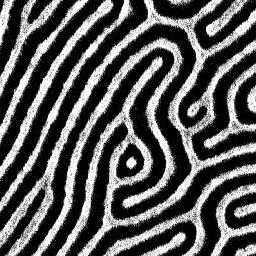The July 11th editorial in the journal, Nature Methods offers an overview of a suite of articles focused on the future of image analysis. The editorial and the technology feature are both available to read for free, while the other articles are paywalled. Here’s an index of the articles for anyone who might be interested:
- What’s next for bioimage analysis?, Nature Methods, 2023 [Editorial]
- Loïc A. Royer, The future of bioimage analysis: a dialog between mind and machine. Nature Methods 20, 951–952 (2023).
- Jun Ma & Bo Wan, Towards foundation models of biological image segmentation. Nature Methods 20, 953–955 (2023).
- “Deep Cell team”, Scaling biological discovery at the interface of deep learning and cellular imaging. Nature Methods 20, 956–957 (2023).
- Challenges and opportunities in bioimage analysis.
- Carpenter, A.E., Cimini, B.A. & Eliceiri, K.W. Smart microscopes of the future. Nature Methods 20, 962–964 (2023).
- Malacrida, L. Phasor plots and the future of spectral and lifetime imaging. Nature Methods 20, 965–967 (2023).
- Chen, J., Viana, M.P. & Rafelski, S.M. When seeing is not believing: application-appropriate validation matters for quantitative bioimage analysis. Nature Methods 20, 968–970 (2023).
- Lambert, T., Waters, J. Towards effective adoption of novel image analysis methods. Nature Methods 20, 971–972 (2023).
- Nogare, D.D., Hartley, M., Deschamps, J. et al. Using AI in bioimage analysis to elevate the rate of scientific discovery as a community. Nature Methods 20, 973–975 (2023).
- Cimini, B.A., Eliceiri, K.W. The Twenty Questions of bioimage object analysis. Nature Methods 20, 976–978 (2023).
- Rahmoon, M.A., Simegn, G.L., William, W. et al. Unveiling the vision: exploring the potential of image analysis in Africa. Nat Methods 20, 979–981 (2023).
- Marx, V. To share is to be a scientist. Nature Methods 20, 984–989 (2023). [Technology Feature]


With ImageJ there was a major democratization in the accessibility of image analysis. It opened up the doors to greater involvement by non-compsci folks; people whose approach is guided and enriched by a deeper mechanistic understanding of what they are looking at. My view is that many of the job posts related to the field are being driven by HR people & committees whose “contribution” is peppering everything with novel buzzwords without understanding the relevance nor the meaning. Especially with academics, there’s a habit of chasing after whatever was used in the latest “hot” paper without understanding what it is, how it works, or if it is applicable, at least when that hot new thing is outside of the prof’s expertise. They don’t need to learn it; they can just tell a grad student to do it.
I absolutely agree with you about HR writing the postings and the transient obsession with buzzwords. However, I think there’s some hard truth to AI displacing classical image analysis approaches or limiting it to pre and post processing. There are many serious issues with AI (deep learning specifically) as an approach for sure, such as black box modeling which gets in the way of rational scientific inquiry, the need for very large data sets for proper convergence, and maybe even hallucination in advanced models. But these issues are a) possibly resolved within a few years with approaches like explainable AI and statistical sampling for the data size perhaps, and b) don’t negate the advantages of simpler AI approaches.
For example, I think supervised machine learning is incredibly useful for allowing complex tasks like segmenting weird objects (like glial cells) and there are even some well established deep learning models for segmenting such things too. So it can be very useful to employ such strategies for certain steps in a pipeline, but making the entire pipeline one giant model is very difficult and unreliable.
Digital pathology is becoming a proper field very quickly, I just hope I can find a footing somewhere in it, because I found myself becoming extremely passionate about image analysis and my career future is looking a bit shakey.
Definitely there is some hard truth, however in the problems as you note are that it is often a black box and not reproducible nor necessarily quantitative among many other problems. I see more of an increasing divide between those who create those AI tools and those who apply them. There’s always been some of this with ImageJ, and macros or plugins have served as a bridge. I foresee similar bridges in the future.
Everything in the future is looking a bit shakey lately with how society and technology continues to co-evolve, so I wish you luck with the career side; I think we all need a bit of luck there.